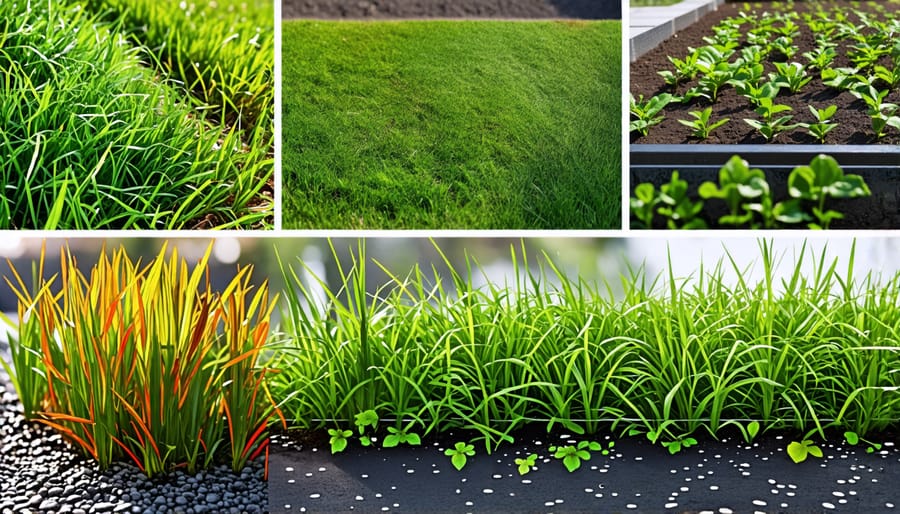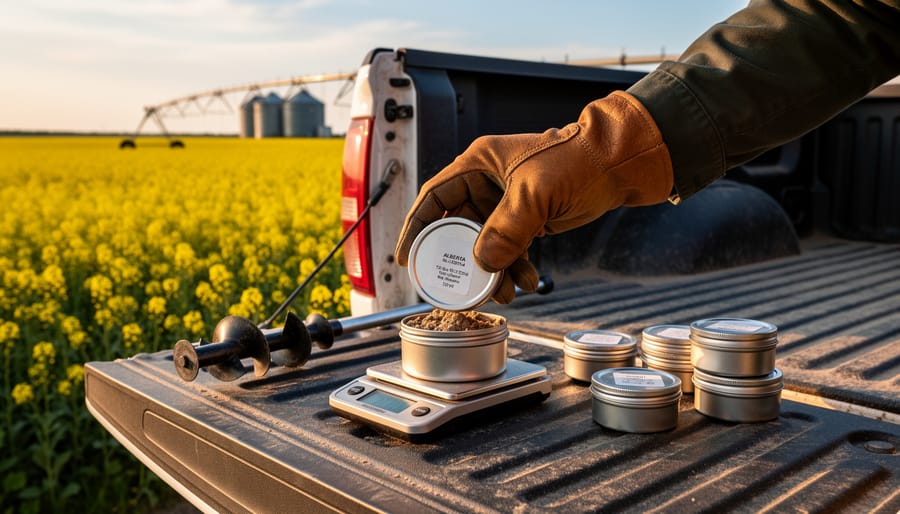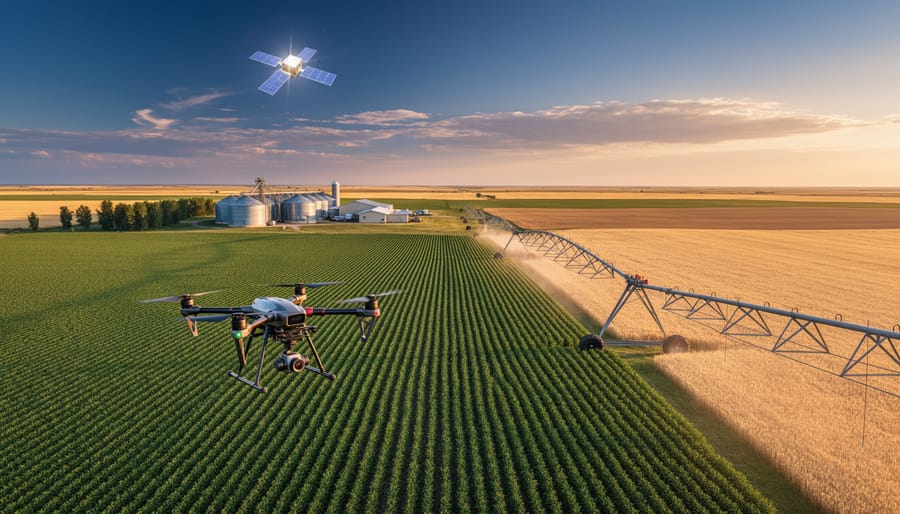Bioinfiltration offers a sustainable solution for managing agricultural runoff, improving water quality, and enhancing soil health. This innovative technique harnesses the power of natural processes to filter pollutants and excess nutrients from water before it enters groundwater or nearby water bodies. By channeling runoff through vegetated swales, detention basins, or other engineered structures, bioinfiltration systems allow water to percolate through layers of soil, gravel, and organic matter. As the water moves through these layers, physical, chemical, and biological processes work together to remove contaminants, such as sediment, pesticides, and excess nutrients. The filtered water then recharges groundwater aquifers or is safely released into the environment. Adopting bioinfiltration practices not only helps Alberta farmers meet environmental regulations but also supports the long-term sustainability of their agricultural operations. Implementing bioinfiltration systems can lead to healthier soils, reduced erosion, and improved crop yields. By embracing this nature-based solution, farmers can demonstrate their commitment to responsible land stewardship and contribute to the preservation of Alberta’s precious water resources for future generations.
What is Bioinfiltration?
The Science Behind Bioinfiltration
Bioinfiltration leverages the power of nature to filter and clean water through a combination of phytoremediation and bioremediation processes. Phytoremediation involves plants absorbing and breaking down pollutants, while bioremediation relies on microorganisms in the soil to degrade contaminants. As water infiltrates the soil, it passes through layers of vegetation and microbial communities that work together to remove sediment, nutrients, and other pollutants. The roots of plants in bioinfiltration systems create channels that enhance water infiltration and promote the growth of beneficial microbes. These microbes, in turn, break down organic matter and convert nutrients into forms that plants can easily absorb. By harnessing these natural processes, bioinfiltration effectively treats stormwater runoff and improves water quality before it reaches groundwater or nearby water bodies. This sustainable approach not only protects aquatic ecosystems but also supports the health and productivity of agricultural soils.

Types of Bioinfiltration Systems
There are several types of bioinfiltration systems that can be implemented on farms to improve water quality and soil health. Vegetated swales are shallow, open channels with vegetation that slow down and filter runoff water. Rain gardens are shallow depressions filled with native plants that absorb and filter pollutants from runoff. Constructed wetlands are engineered systems that mimic natural wetlands, using vegetation, soils, and microbes to treat agricultural runoff. Bioretention cells are landscaped areas designed to collect and filter stormwater runoff using soil and vegetation. Infiltration trenches are narrow, deep trenches filled with gravel that allow runoff to infiltrate into the soil. By selecting the appropriate bioinfiltration system for their farm’s unique characteristics, such as soil type, topography, and climate, Alberta farmers can effectively manage runoff and protect the environment while enhancing their agricultural practices.

Benefits of Bioinfiltration for Alberta Farmers
Enhancing Water Quality and Quantity
Bioinfiltration is a powerful tool for Alberta farmers looking to conserve water resources and improve the quality of runoff entering local waterways. By allowing water to slowly infiltrate through soil and vegetation, this process filters out pollutants such as sediment, nutrients, and pesticides. The native plants used in bioinfiltration systems also help to absorb excess water, reducing the risk of erosion and flooding downstream.
According to a recent case study, an Alberta farm implementing bioinfiltration reported a 60% reduction in runoff volume and a significant decrease in nutrient levels. By minimizing the amount of contaminated water leaving their fields, farmers can play a vital role in protecting the health of nearby rivers, lakes, and streams.
Moreover, bioinfiltration can help farmers conserve water by recharging groundwater aquifers. As water percolates through the soil, it replenishes these underground reservoirs, which can be crucial during times of drought. Implementing bioinfiltration on your farm not only benefits the environment but also contributes to the long-term sustainability of your agricultural practices.
Boosting Soil Health and Fertility
Bioinfiltration is a powerful tool for promoting healthy soil ecosystems on Alberta farms. By allowing water to slowly percolate through the soil profile, this practice encourages the growth of beneficial microorganisms and stimulates the decomposition of organic matter. As a result, the soil’s structure improves, becoming more porous and better able to retain moisture and nutrients. Over time, the increased organic matter content enhances soil fertility, reducing the need for synthetic fertilizers and promoting more sustainable crop production.
Bioinfiltration also plays a crucial role in nutrient cycling, as the diverse community of soil organisms helps to break down plant residues and other organic materials, releasing essential nutrients back into the soil. This process not only supports plant growth but also helps to prevent nutrient leaching and runoff, protecting nearby water sources from pollution. By adopting bioinfiltration practices, Alberta farmers can create more resilient and productive agricultural systems that prioritize soil health and long-term sustainability.
Implementing Bioinfiltration on Your Farm

Designing a Bioinfiltration System
When designing a bioinfiltration system for your farm, consider factors such as soil type, topography, and the specific pollutants you aim to filter. Conduct a thorough site assessment to identify the most suitable location for your bioinfiltration area, ensuring it can effectively intercept and treat runoff from fields or livestock facilities.
Determine the appropriate size of your bioinfiltration system based on the amount of runoff it needs to handle. As a general rule, the surface area should be at least 2-4% of the drainage area. Choose native plant species that are well-adapted to the local climate and soil conditions, as they will be more resilient and require less maintenance.
Incorporate a diverse mix of plants, including grasses, sedges, and rushes, to create a robust root system that enhances infiltration and pollutant removal. Consider including nitrogen-fixing plants like legumes to improve soil fertility. Ensure the selected plants can tolerate both wet and dry conditions, as bioinfiltration areas experience fluctuating water levels.
Design your bioinfiltration system with gentle slopes and gradual grade changes to promote even water distribution and prevent erosion. Include a pretreatment area, such as a vegetated filter strip or sediment forebay, to remove larger particles and debris before the runoff enters the main bioinfiltration area. This will extend the life of your system and reduce maintenance requirements.
Maintaining and Monitoring Performance
Regular maintenance and monitoring are crucial for ensuring the long-term effectiveness of bioinfiltration systems on Alberta farms. This involves routinely inspecting the system components, such as vegetation, soil, and drainage structures, to identify any issues or areas that require attention. Common maintenance tasks include removing debris, replacing damaged plants, and managing vegetation growth to prevent clogging and maintain optimal infiltration rates.
Monitoring the performance of bioinfiltration systems is equally important. Farmers should regularly assess water quality parameters, such as sediment load, nutrient levels, and contaminant concentrations, to evaluate the system’s effectiveness in treating runoff. Soil health indicators, like organic matter content and infiltration rates, should also be monitored to ensure the system continues to function as intended.
By dedicating time and resources to maintenance and monitoring, Alberta farmers can optimize the benefits of bioinfiltration systems, including improved water quality, enhanced soil health, and increased resilience to extreme weather events. Consistent care and attention will help these systems remain effective for years to come, contributing to the long-term sustainability of agricultural practices in the region.
Conclusion
Bioinfiltration offers a promising solution for Alberta farmers seeking to enhance their agricultural practices while promoting environmental sustainability. By implementing bioinfiltration systems on their farms, growers can effectively manage stormwater runoff, improve water quality, and maintain the health of their soil. The numerous benefits of bioinfiltration, including reduced soil erosion, increased nutrient retention, and enhanced crop yields, make it an attractive option for farmers looking to optimize their operations and contribute to a more sustainable future.
As the demand for sustainable agricultural practices continues to grow, Alberta farmers have the opportunity to lead the way in adopting bioinfiltration techniques. By embracing this innovative approach, they can not only improve the resilience and productivity of their farms but also serve as role models for the wider agricultural community.
To further explore the potential of bioinfiltration and learn more about its implementation, farmers are encouraged to access the resources and support available through the Organic Farming, The Canadian Way platform. This valuable resource offers a wealth of information, including case studies, expert insights, and practical guidance, empowering farmers to make informed decisions and successfully integrate bioinfiltration into their operations.
By working together and sharing knowledge, Alberta farmers can create a stronger, more sustainable agricultural sector that benefits both the environment and the communities they serve. Embracing bioinfiltration is a crucial step in this journey, and with the right tools and support, farmers can confidently navigate the path towards a greener, more prosperous future.











